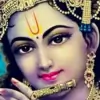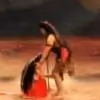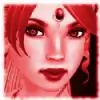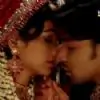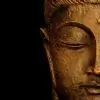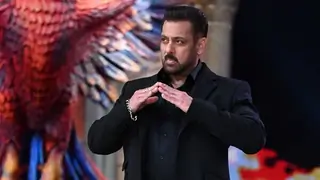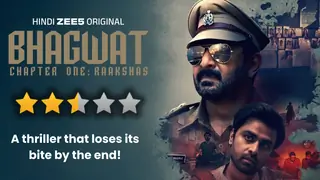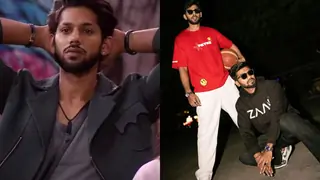Editions of Mahabharata and Size
Mahabharata mentions that there were 4 main editions, the complete one with 60 lakh slokas, the thirty lakh slokas one that dealt with Swarga is called Narada edition, 15 lakhs sloka edition (by Asita Devala) that dealt with realm of Pitris, 14 lakh sloka edition for Gandharvas, Yakshas and Rakshasas and One lakh complete slokas for humans as detailed by Vaishampayan. It clearly states the 8800 initial summary created for Suka and 24000 smaller version which can be told if you don't have the time. There is no 8800 initial version and 24000 later version, 8800 is called a summary and 24000 is Bharata or Samkshipta Mahabharata.
It is clearly stated that the one lakh sloka version is called Jaya Itihaas or Adi Mahabharata. It is clearly written by Vyas. Before we start the work of Vyas, there is Astika Parva or Astika Purana written by Romaharshana and added at start of 100,000 sloka Vyas creation. Before that there is Pushya Parva added by Ugrashrva and now modern texts add Parva Sanghraha Parva and Anukarmika ahead on that.
Later commentators mention that Mahabharata is in editing from 4th cen BC to 4th cen ad. Some relevant topics du jour are added and some removed. The society is changing and Mahabharata's surrounding foliage of stories is being trimmed and re-sown. 89 AD, the inscription by King Sarvanath states that Vyas created Mahabharata has one lakh plus slokas.
Then we have Lakshalankar. This commentary is celebrated in ancient texts and referenced though little of this huge work is now extant but the references from even early times indicate that it was twice the size of current northern editions and was regarded as highly unadulterated by editors, Shuddh! Actually Neelkantha has supposed to have seen this text and added Nalayniya section of his Mahabharata from Lakshalankar.
We have verse and chapter count from a 4th century AD recession. That tallies to great extent to the verse count recorded by Akbar's court when translating to Persian. The number of verses are 83000 or so and has an appendix of 12000 verses called Khilavansha. The Persian edition count is 83K or so plus 16000 verses Harivamsha and Vishnu Parva.
In 17th century, Neelkantha wrote a great commentary and compiled a very clean and efficient edition from texts whose antecedents and chain of custody he could trace back to 11th century AD. He also mentions of changes wrought by non-Hindu editors but does not remove them and comments on them. Neelkanth apologises that he does not better works to work with and lot of characters in the epic cannot have justice done to them.
Most northern editions have 83K to 86K verses while most southern versions have 100K plus verses and then Harivansha is added on top of that. Many of the extra stories in Southern editions have also long antecedents and antiquity or may even retain greater right to be part of Mahabharata. The modern texts include 1931 (1962 revised) Critical edition or Pune edition (which became more and more Krishna worship as time progressed, most of initial scholars were Germans who were all arrested during World War 1 as enemy citizens! so all the Pali research does not make its way into the critical edition), there is 1834 Telugu edition called Madras edition, 1878 Neelakantha edition, PC Roy edition 1882, there is Dakshinatya Kumbhakonam edition 1905 ( 1st published 1834,), there is Geeta Press edition from 1920s which you all can download.
The Gorakhpur or Geeta Press edition has 86600 verses from northern texts (that is almost 3000 more than any other northern text other than mountain ones), they included 6584 slokas from Southern texts (from around 30000 or so plus available) and they further added 7033 verses from ("Uvach") folk editions or stories which were deemed ancient enough or were considered by editors should be part of the Mahabharata though they added comments with them to identify them. The Draupadi refusing Karna as Suta King is one such sloka which Geeta Press edition states in comments as not available elsewhere but added from local stories. 1920s was the start of great Harijana movement and though Mahabharata is about High caste Kshatriyas and Sutas, the local climate would have affected the editors when selecting these Uvach slokas. ("So Said".)
Alterations and What is changed
The critical edition is 21 chapters shorter in Adiparva and the count in the Mahabharata itself indicates that Adiparva is 1000 slokas shorter. Ashwamedhik Parva is 30 chapters shorter.
Sabha Parva current count is 2511 but it is 2000 slokas shorter than what is indicated in several Parva sangrahas. Current Geeta Press edition does not cover those 2000 odd slokas though atleast one printed edition from 1895 and 4 palm leaf manuscripts are available with full text. Geeta Press edition we have now adds 1200 plus slokas from Dakshinatya edition and total in Geeta press edition for Sabha Parva is almost 4000 slokas, still around 500 shorter than Dakshinatya version.
Virata also loses half of its size, Udyoga also loses 1500 slokas and Bhishma loses 2000 slokas as do Drona, Karna gains 700 slokas, Ashwamedhika loses 1000 slokas and Anushasana loses 4000 slokas. Ashramavasika loses 400 while Mausala and Mahaprsthanika and swargarohana with just 100 slokas each somehow gain lot of slokas.
This indicates that over time, lot of Sabha Parva and Virata was removed whose stories are still available in Southern editions. War Parvas also lose lot of characters and their introduction, just their deaths are mentioned. Anushasana was an invention of Non-Hindu and later casteist editors and its losses of 4000 slokas may not be taking anything away from the story. And the adulterant later-parvas are obviously late additions to storyline, Sauptika is a big example, a dream sequence play by Bhasa became a Parva. It was probably added by Saivite editors to give some role to Saivite characters and then adulterated by Vaishanva editors to downgrade those very characters. The later description in the epic and also folk stories contradicts the role of these characters in Sauptika Parva.
Ugrasrava description of Parvas and Sub-Parvas
What is interesting is Ugrasrava summarizing the Parva sequence in start of Epic. This Parva sequence is different from the current Mahabharata list of 18 Parvas.
Current Mahabharata list is Adiparva, Sabha, Vana, Virata, Udyoga, Bheeshma, Drona, Karna, Salya, Sauptika, Stree, Shanti, Anushasan, Ashwamedhika, Ashramavasika, Musala, Mahaprasthanika and Swragarohana.
Ugrsrava lists the following:
Paulomaparva (his work) and Astika Purana/Parva (his father Romaharshana's work) then SambhavaParva (Adi Parva) then SabhaParva and AranyaParva (Vana and Aranya are same meaning) then he mentions a complete, different and very important Parva, Araniparva, the great mine of religion and virtue. These are the teachings of Yudhishthara on a casteless society (to the Yaksha and Gandharva) where Karma rather than Dharma or janama is paramount. Arani Parva in a small mutilated sections is left as part of Vana Parva. The meritocratic casteless Karma-pradhana society and its teachings were not what the Kaliyuga ordered! I am sure that the Yaksha-Gandharva edition of Mahabharata would have this Parva intact.
Ugrasrva's list continues with Virata then Udyoga then Bhishma then Drona then Karna then Salya then Stri parva.
Sauptika parva is completely missing in Sootji's original description. Then we have Aishika Parva (Reeds), this is missing altogether and may be a pointer to giving water to the fallen warriors (standing in the reeds Aishika) but that is my speculation. The Sootji continues with Santiparva then Aswamedhaparva then Asramavasikaparva then Mausala Parva and that is the end of story. (The entire Anushasana, Mahaparsthanika and Swargarohana are missing from this original list in the Epic.).
Initial list in Mahabharata is also 18 Parvas and current Mahabharata also has 18 Parvas. Sauptika, Mahaprasthanika, Anushasana and Swargarohana are the interlopers. We have Arani, Aishika as the missing Parvas. The difference is almost 16000 slokas, discounting interlopers we may be missing 26000 slokas.
What is missing on Sub-Parva level
Adi Parva:
On closer examination of what Sootji states and what is missing on sub-parva basis is Subhadra wedding descriptions, sections which describes Yudhishthara's administration in detail, Maya-Darshan is smaller in size.
In Sabha Parva, Mantrana Parva or Administration Advice is again missing but replaced by Lokpala Sabhakhyan and Rajasuyaarambhaka Parvas, Jarasandha Parva is edited down and so are missing large sections of Digvijay parva.
In Vana Parva, losses seem to be with Jatasura and Yaksha war sections, Ajagar section (though probably this sectin reappears in Udyoga Parva), Mriga-Swapna (dream of the deer which is left to less than 20 slokas) and working with nature section is edited down as are stories of Brihadaranyaka and then Aindradrumna. Savitri story is inflated in (it is at two places)and Ramayana is reduced. Kritya story is also very different and more extended in folk editions.
Ugrasrava summarizes some of the sections in Vana parva:
Bhimasena's journey to Gandhamadana at the request of Draupadi (in search of the sweet-scented blue flower).
Bhima's meeting with Hanumana;
Bhima's bath in the tank and the destruction of the mighty Rakshasas and the Yakshas of great prowess including Maniman then
Jatasura story then
Pandavas meet Vrishparvan,
then they go to Arishtasena's asylum,
then Bhima is incited to acts of vengeance, then is narrated the ascent on the hills of Kailasa by Bhimasena, his terrific battle with the mighty Rakshasas;
then the meeting of the Pandavas with Vaisravana (Kuvera).
So, here there are two different Rakshasa wars in Gandhamadana and Kailasa; both featuring Bhima and the Pandavas with Vrishparvan and Vaisarvana after each of these battles. Only one war is described in the Vana Parva we have now.
In Virata, Abhimanyu marriage section is reduced. More than half of Parva is missing. The action actually opens on 290th day of exile and then fast forwards to about 352th day and then 383rd day.
In Udyoga Parva
'Prajagara' (the sleeplessness of Dhritarashtra owing to his anxiety) is reduced in size.
Then Sanatsujata, in which are the mysteries of spiritual philosophy. This seems to be added in, Saunaka is in audience and descended from these Rishis. Sanata and Sujata philosophies are also not part of Sanatana dharma but represent a different Samprayadic path which indicates a religious sect lost in time and memory like Manicheanism.
Then there is arrival of Krishna in Hastinapur. Then the story of 'Matali' and then of 'Galava'. Then the stories of 'Savitri', 'Vamadeva', and 'Vainya'. Then the story of 'Jamadagnya and Shodasarajika.
Then the arrival of Krishna. (again!!) So it seems so that stories of Matali, Galava, Savitri again, Vamadeva, Vainya (who might be a king in 5th cen India) are inserted from outside and not part of the main Mahabharata.
Kunti's teachings are listed next
Then the muster of troops is described and the story of Shveta, son of Virata. This section is completely missing. We meet Sveta just before he dies. In Folk and other editions, he has bigger role.
Another section I am not commenting on due to certain local tendencies. See, how even a modern commentator is forced by local situation in editing his data.
Enumeration of Rathis is reduced.
War Parvas:
Bheeshma is missing Dwipaupakhyan which is there in Jaina versions. Then in Drona Sanshaptaka destruction is very much reduced. The death of Drona section is listed by Ugrasrava as surprising and avishwasniya. Death of Brahmin is obviously edited by later editors.
Salya and Stree
Salya is missing Saraswata Parva and genealogies lists and lists of surviving warriors. This section would be contradictory to Sauptika when someone later added in Sauptika so this section is taken out. Stree is edited and Shradha parva missing, the shradha rites change over time but list of names in this parva would again give lie to Sauptika.
In a moment of mistake by editor who added in Sauptika, Dhritrashtra asked how many survived, the answer given by Yudhishthara is Twenty four thousand, one hundred and sixty five. In Salya Parva at Sakuni's fall, Sanjaya enumerates Pandava strength at 1700 elephants, 3000 Rathis, 5000 horses and 10000 foot. Counting mahouts and charioteers, 3400 plus 6000 plus 5000 plus 10000 makes it 24400 almost same as 24165 given by Yudhisthara indicating Sauptika was a dream sequence.
In popular imagination, they state that Seven Pandavas (5 plus Krishna and Satyaki) and 3 Kaurava warriors survived. This is itself contradicted in Epic where Yuyutsu, Sanjay and Indrasena, Visoka, with 14 Rathis by name and army escort ladies to the field and back.
Bloated Santiparva is missing Grahapravibhaga, another administration section, edited out. Maya Danava should make reappearance now as per Ugrasrava but is missing. Anushasana is definitely an interpolation. Everything after chapter 35 may be added much later than original Epic. Even those 35 are probably stolen from Vana, Santi and other places inside the epic itself.
As an aside, Indonesian Mahabharata has two versions:
There is 8 Parva (Non-War) version (basically Adi, Sabha, Vana, Virata, Santi, HAstinapur, Ashwamedha and End) and a separate War Parva (Udyoga, Sveta, Bheeshma, Drona, Karna, Salya et all)
Like Vyas's 100 sub-parva organization, there is also the 149 Parva grouping with 94 sub-Parvas dedicated to Pandava rule at Indraprastha and their extended family (literally a huge Indraprastha Parva or Amartya Parva, 32 sub-Parvas deal with rest of Mahabharata proper including war and 23 sub-parvas are mostly Javanese/local and also some Indian legends which are not in our Epic. Another organizational structure is story level variant and more than 600 stories are listed in sequence covering the whole of Epic except War.
Then there is Wayang performance version where each chapter is one performance using puppets. From death of Pandu to Drauapdi marriage are 93 nights or performances not including Ghatotkacha birth stories which are separate set of plays.
A corollary to this research is:
Yudhishthara s era started when he was crowned at Indraprastha. A throwaway sloka states that Kali Yuga should have started 25 years before. Vyas states on Pandu's death that Kaliyuga is about to start. Hanuman states that Kaliyuga has started in Vana parva. There are several more references and a counter, Dharma is still alive so no Kaliyuga. If Krishna is there, this Kaliyuga is like Kritayuga. Mahabharata occurred 75 years after Kali should have started but has been stopped by Krishna and Dharma. They kept Kali at bay for 60 more years. That is Sandhya between Dwapara and Kali yuga.
Virata Battle: Arjuna revealed himself to the Kauravas. Immediately Duryodhana, asked Bheeshma, if he had not come out earlier than the stipulated time, to which he replied that the Pandavas were in exile for 13 lunar years, five lunar months and 12 days ( = 4766.42 days) [13 sidereal years =4748.34 days, and so the Pandavas were in exile for18 days more than the stipulated period]. (I have heard another version which had 6 days less, either way, Pandavas escaped detection by plenty to spare.)
Edited by bhas1066 - 11 years ago



